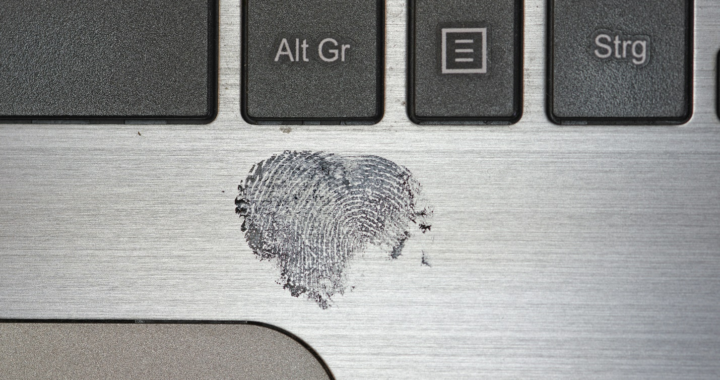In an era where technology pervades every aspect of society, the legal system faces new challenges in balancing transparency and privacy. Forensic redaction, a crucial tool in modern legal cases, plays a pivotal role in ensuring this equilibrium. With the growing reliance on digital forensic services, computer forensics consultants, and forensic video analysis, legal professionals must carefully navigate the complexities of protecting sensitive information while preserving public accountability.
Understanding Forensic Redaction
Forensic redaction involves the selective removal or obscuring of sensitive or irrelevant information from evidence to protect privacy or comply with legal standards. This practice is often applied to digital evidence such as video recordings, audio files, and documents to ensure that only pertinent and admissible content is presented in court.
Why is Forensic Redaction Important?
- Privacy Protection:Redaction prevents the exposure of personally identifiable information (PII) that could harm individuals or infringe on their privacy rights.
- Legal Compliance:Many jurisdictions have laws governing the handling and disclosure of sensitive information, making redaction a legal necessity.
- Evidence Integrity:Proper redaction ensures that evidence remains credible and admissible while protecting non-relevant parties’ rights.
The Role of Digital Forensic Services in Redaction
Digital forensic services play a critical role in modern redaction efforts. These services employ specialized tools and techniques to analyze, extract, and process data while maintaining its integrity.
Applications in Legal Cases
- Document Analysis:Identifying and redacting sensitive information such as social security numbers, addresses, or confidential business data from digital documents.

- Image and Video Redaction:Blurring faces, removing audio, or concealing sensitive visual elements in surveillance footage and other recordings.
- Audio Redaction:Removing sensitive or irrelevant audio snippets while preserving the context necessary for the case.
The expertise of computer forensics consultants ensures that the redaction process adheres to legal and ethical standards, minimizing the risk of tampering allegations.
Techniques and Tools for Forensic Redaction
Advancements in technology have provided a range of tools for efficient and precise forensic redaction.
Redaction Software
Software solutions designed for forensic redaction offer functionalities such as:
- Automated PII Detection:Identifying and obscuring sensitive data
- Frame-by-Frame Video Editing:Allowing precise redaction of specific elements in video evidence.
- Audio Editing Tools:Removing or altering audio tracks to protect sensitive information.
Manual vs. Automated Redaction
While manual redaction provides meticulous control, it can be time-consuming and prone to human error. Automated tools, on the other hand, speed up the process but require skilled operators to ensure accuracy and relevance.
Challenges in Forensic Redaction
Despite its importance, forensic redaction presents several challenges that demand careful consideration.
Balancing Transparency and Privacy
Striking a balance between revealing necessary evidence and protecting privacy is a delicate task. Over-redaction can obscure critical details, while under-redaction can expose sensitive information.
Technical Complexity
Handling large volumes of digital evidence with diverse formats requires specialized skills and tools. The involvement of computer forensics consultants ensures that technical challenges are addressed effectively.
Maintaining Evidence Integrity
Ensuring that the redacted evidence remains admissible and untampered is a constant concern. Any indication of alteration can undermine the credibility of the evidence.
Forensic Video Analysis in Redaction
Forensic video analysis is a specialized branch of forensic science focused on examining, enhancing, and authenticating video recordings for legal purposes.
Role in Redaction
Forensic video analysis is often employed to redact video evidence while preserving its probative value. This includes:
- Blurring faces to protect the identities of non-relevant individuals.
- Removing timestamps or metadata that could compromise privacy.
- Enhancing clarity for better interpretation of key elements.
Legal and Ethical Considerations
Forensic redaction must comply with both legal standards and ethical obligations.
Admissibility Standards
Courts require that redacted evidence meets specific criteria to ensure its credibility:
- Relevance:Only information pertinent to the case should remain visible.
- Authenticity:The redacted evidence must be provably unaltered in a way that affects its meaning.
Ethical Guidelines
Legal professionals and forensic experts must navigate ethical challenges, such as avoiding selective redaction that could mislead the court. Transparency in the redaction process is essential to uphold justice.
The Future of Forensic Redaction
The field of forensic redaction is evolving rapidly, driven by advancements in technology and the increasing reliance on digital evidence.
Artificial Intelligence and Machine Learning
AI-powered tools are revolutionizing the redaction process by enabling faster and more accurate identification of sensitive information. Machine learning algorithms can adapt to specific cases, improving efficiency over time.
Cloud-Based Solutions
Cloud platforms offer scalable and secure solutions for managing and redacting large volumes of evidence. These solutions enable collaboration among legal teams and forensic experts across different locations.
Enhanced Security Measures
As cyber threats grow, ensuring the security of redacted evidence is paramount. Encryption and secure storage protocols are becoming standard practices in forensic redaction.
The Role of Computer Forensics Consultants
Computer forensics consultants bring specialized knowledge and expertise to the redaction process.

Key Contributions
- Data Recovery and Analysis:Identifying and extracting relevant information from damaged or encrypted digital evidence.
- Compliance Assurance:Ensuring that redaction practices align with legal and regulatory standards.
- Expert Testimony:Providing credible insights into the redaction process and its impact on evidence integrity.
Collaboration with Legal Teams
Effective collaboration between consultants and legal professionals ensures that the redaction process supports the broader objectives of the case. Consultants often provide training and guidance to legal teams on the latest tools and techniques.
Case Studies in Forensic Redaction
Examining real-world examples highlights the importance and impact of forensic redaction in legal cases.
High-Profile Criminal Trials
In cases involving sensitive evidence, such as surveillance footage or personal communications, redaction is used to protect the privacy of victims and witnesses while ensuring that critical information is available to the court.
Corporate Litigation
In disputes involving trade secrets or confidential business information, redaction prevents the unauthorized disclosure of sensitive data. Digital forensic services are often called upon to manage these complex cases.
Civil Rights Cases
Forensic redaction plays a crucial role in civil rights litigation, where protecting the identities of individuals involved can be a matter of personal safety.
Best Practices for Forensic Redaction
To achieve effective forensic redaction, professionals must adhere to best practices that ensure both transparency and privacy.
1. Comprehensive Planning
Develop a clear redaction strategy that outlines the objectives, tools, and methods to be used.
2. Regular Training
Ensure that forensic experts and legal teams are trained in the latest redaction technologies and techniques.
3. Documentation and Transparency
Maintain detailed records of the redaction process to demonstrate compliance and integrity.
4. Quality Assurance
Conduct thorough reviews of redacted evidence to verify accuracy and completeness.
5. Secure Handling of Evidence
Implement robust security measures to protect redacted evidence from unauthorized access or tampering.
Ensuring proper redaction of sensitive data is key to maintaining privacy while preserving transparency.

The Intersection of Technology and Justice in Redaction
Technological advancements have transformed how evidence is prepared for legal proceedings, particularly through forensic redaction. Innovations such as artificial intelligence, blockchain, and augmented reality offer unprecedented precision in safeguarding sensitive data while maintaining evidence credibility. These tools streamline processes, reduce human error, and ensure compliance with evolving legal standards. Forensic redaction has become a bridge between technological capabilities and judicial requirements, ensuring that privacy and transparency coexist harmoniously. By leveraging cutting-edge technologies, legal professionals can handle increasingly complex digital evidence efficiently, adapting to modern challenges while upholding the principles of justice and fairness.
With the growing reliance on digital forensic services, computer forensics consultants, and forensic video analysis, legal professionals must navigate an increasingly complex landscape to ensure justice is served. By embracing advanced tools, adhering to ethical standards, and fostering collaboration, the legal community can continue to uphold the principles of fairness and accountability in the digital age.
Expert Digital Forensics for Legal and Confidential Matters
Protecting sensitive information without compromising the integrity of legal evidence is vital in today’s digital world. At Eclipse Forensics, we specialize in digital forensic services, offering expert computer forensics consultants to handle your case with precision and care. From meticulous forensic video analysis to comprehensive data handling, we ensure that privacy and transparency remain balanced. Whether you need assistance with legal investigations, corporate disputes, or criminal cases, our team is equipped with cutting-edge tools and expertise to deliver results you can trust. Contact Eclipse Forensics today to learn how we can support your legal needs with professionalism and confidentiality.













